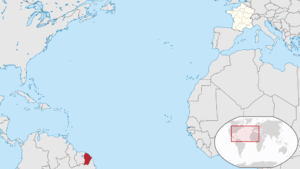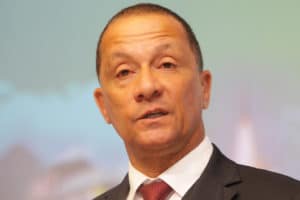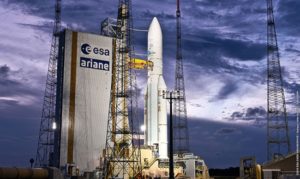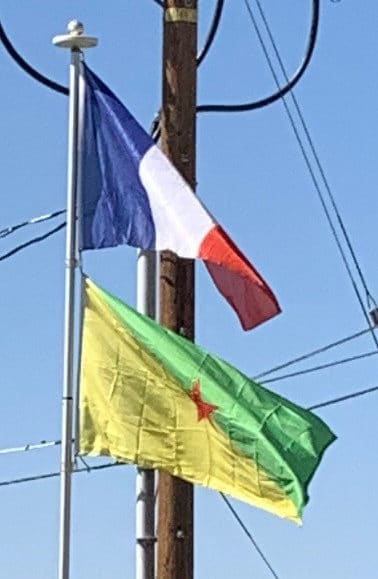Introduction:
French Guiana is an overseas department and region of the French Republic on the northern Atlantic coast of South America in the Guianas. It borders Brazil to the east and south and Suriname to the west. French Guiana is the only territory of the mainland Americas to have full integration in a European country.

With a land area of 83,534 km2 (32,253 sq mi), French Guiana is the second-largest region of France (it is more than one-seventh the size of Metropolitan France) and the largest outermost region within the European Union. It has a very low population density, with only 3.6 inhabitants per square kilometer (9.3/sq mi). Its population is less than 1⁄200 that of Metropolitan France. Half of its 290,691 inhabitants in 2020 lived in the metropolitan area of Cayenne, its capital. 98.9% of the land territory of French Guiana is covered by forests, a large part of which is primeval rainforest. The Guiana Amazonian Park, which is the largest national park in the European Union, covers 41% of French Guiana’s territory.
Since December 2015 both the region and the department have been ruled by a single assembly within the framework of a new territorial collectivity, the French Guiana Territorial Collectivity. This assembly, the French Guiana Assembly, has replaced the former regional council and departmental council, which were both disbanded. The French Guiana Assembly is in charge of regional and departmental government. Its president is Rodolphe Alexandre.

Before European contact, the territory was originally inhabited by Native Americans, most speaking the Arawak language, of the Arawakan language family. The people identified as Lokono. The first French establishment is recorded in 1503, but France did not establish a durable presence until colonists founded Cayenne in 1643. Guiana was developed as a slave society, where planters imported Africans as enslaved labourers on large sugar and other plantations in such number as to increase the population. Slavery was abolished in the colonies at the time of the French Revolution. Guiana was designated as a French department in 1797. But, after France gave up most of its territory in North America in 1803, it developed Guiana as a penal colony, establishing a network of camps and penitentiaries along the coast where prisoners from metropolitan France were sentenced to forced labour.
During World War II and the fall of France to German forces, Félix Éboué was one of the first to support General Charles de Gaulle of Free France, as early as June 18, 1940. Guiana officially rallied to Free France in 1943. It abandoned its status as a colony and once again became a French department in 1946.
After de Gaulle was elected as president of France, he established the Guiana Space Centre in 1965. It is now operated by the CNES, Arianespace and the European Space Agency (ESA).

In the late 1970s and early 1980s, several hundred Hmong refugees from Laos immigrated to French Guiana, fleeing displacement after United States involvement in the Vietnam War. In the late 1980s, more than 10,000 Surinamese refugees, mostly Maroons, arrived in French Guiana, fleeing the Surinamese Civil War. More recently, French Guiana has received large numbers of Brazilian and Haitian economic migrants. Illegal and ecologically destructive gold mining by Brazilian garimpeiros is a chronic issue in the remote interior rain forest of French Guiana. The region still faces such problems as illegal immigration, poorer infrastructure than mainland France, higher costs of living, higher levels of crime and more common social unrest.
